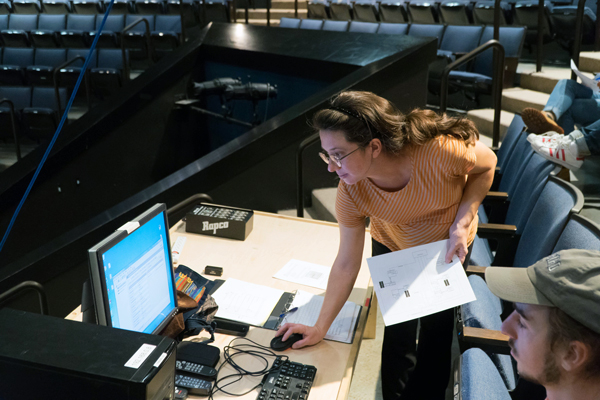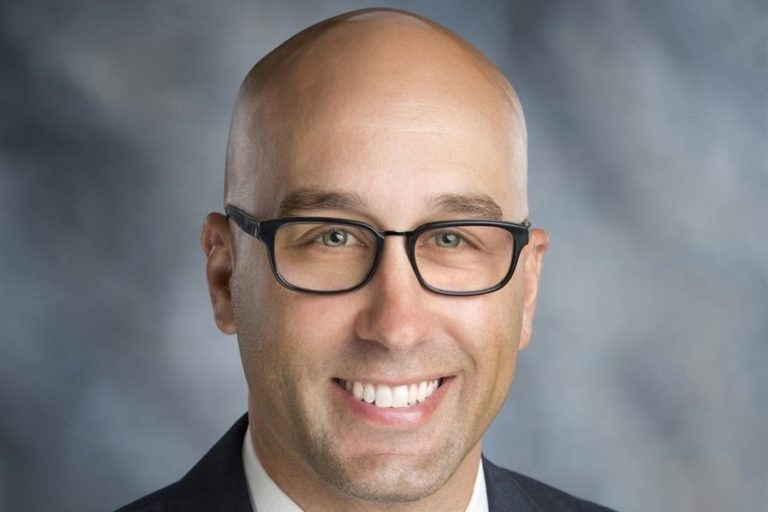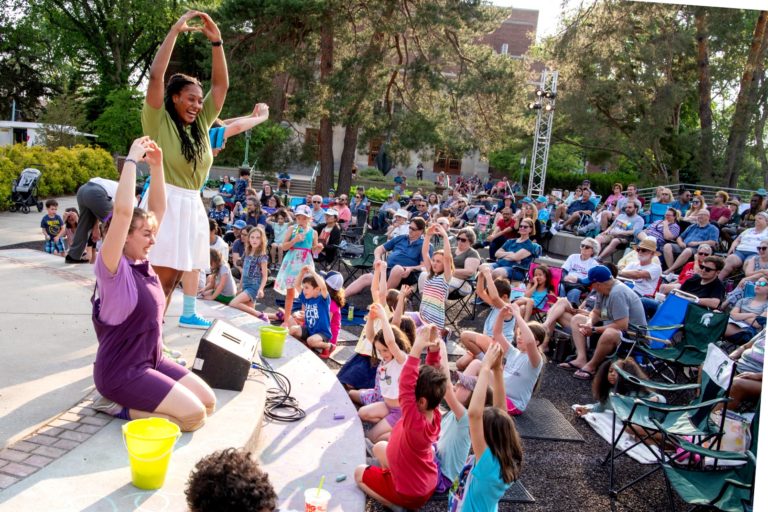
Step inside the Michigan State University Wharton Center for Performing Arts Pasant Theatre on a Thursday afternoon and you might be surprised by the way in which MSU students are preparing for a production of Shakespeare’s 450-year-old play, The Tempest. There are no actors, no candlelit stage, nor even someone seaming a feather or jewel to a costume. Instead, students are actively using digital media, testing lighting with color contrasts, and designing new special effects using state-of-the-art projections.
Students are starting to think well beyond what they know how to do.
ALISON DOBBINS
“This isn’t the traditional Shakespearean play we are creating,” said Alison Dobbins, Professor in the College of Arts & Letters’ Department of Theatre and the College of Communication Arts and Sciences’ Department of Media and Information. “My class integrates digital media, technology and theatrical production to provide magical effects for stage performances. This Tempest production is just one example of how this class is providing a different take on a Shakespearean classic.”
When creating the Theatre & Media Information 419 class, titled “Projection Design for Live Performance,” Dobbins took an interdisciplinary approach. Her goal was to provide MSU students an environment and space to learn how to integrate new digital media and design into theatre productions. This included cross-disciplinary learning between majors, collaborating with one another, project managing and mapping, and communication strategies – all while layering in the latest technological advances in stage performances that give audiences a performance like they had never seen.
“The thought was to provide a transformative experience for students and make them think beyond what could be possible,” Dobbins said.
I am getting exposure to different techniques and programs that I did not know existed.
DOUG MCCOUSLAND
“This new digital form of cinema and creativity I am learning has been remarkable,” said Natalie See Chen, a senior majoring in Media and Information. “It has broadened my view on how to incorporate digital media arts not only on stage, but in the work I do regularly in video as well.”
Doug McCousland, a master’s student in Music Composition, took the class to learn more about the crossover work in video, digital media and electronic music.
“This class makes you push yourself,” he said. “I am getting exposure to different techniques and programs that I did not know existed. And as I approach my own projects from a creative aspect, I am looking at how video, digital music and scripts all interact with each other to create phenomenal performances.”
Josiah Masvero, a first-year student majoring in Theatre, says working in a project-based class like this offers students “big picture” views on how to put together shows in their entirely.

“The professional theatre world is changing so fast with technology, this gives you an opportunity to work with cutting-edge software and hardware to see how it all comes together,” he said.
Students from a wide variety of majors, such as music, media, theatre and engineering, have enrolled in the course and are working together on stage performances in a variety of aspects.
“Each of us comes from a different discipline and knowledge of technology,” Masvero said. “By working together, we are creating performances that audiences love and are engaged with throughout the show. To me, this is the real win.”
The class, developed for the Department of Theatre, is part of the MSU Media Arts Collaborative (MAC), a dedicated creative endeavor in the integrated media arts between MSU’s College of Arts & Letters, College of Communication Arts and Sciences, and College of Music. The MAC coordinates creative effort to promote collaborative projects that cut across disciplines to enrich the student learning experience among the three colleges.
By working together, we are creating performances that audiences love and are engaged with throughout the show.
JOSIAH MASVERO
Through the MAC, students develop skills across multiple disciplines for careers in creative industries such as television, music, theatre, film, gaming and visual arts. Masvero said that MAC opportunities, like Dobbins’ class, are essential to honing his skills and making him more marketable after graduation.
“Students are starting to think well beyond what they know how to do,” Dobbins said. “They are learning how to think about situations differently through new digital applications we offer in the class. This in turn creates an even better performance for audiences. That is the long-term value of this interdisciplinary approach and having the Media Arts Collaborative here at MSU.”
Alison recently was awarded a 2017 Pulsar Award for “Best Specialization” for The Tempest from City Pulse Magaizine.


